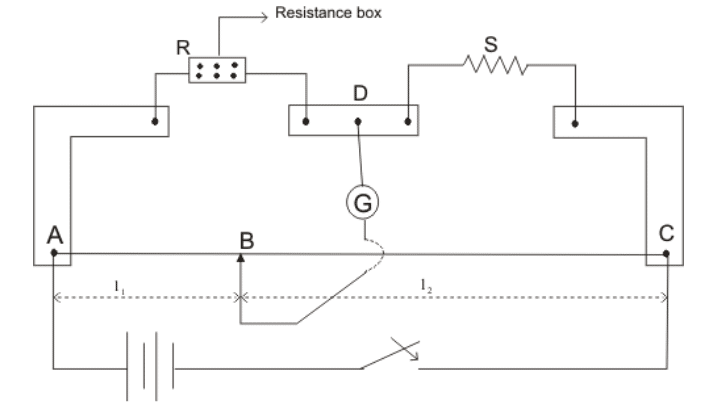The metre bridge uses principle of Wheatstone bridge to measure an unknown resistance.
It consists of a uniform wire AB 100cm long; the ends are soldered to two copper or brass strips with the wire stretched over a calibrated scale. The third strip or plate is placed parallel to the wire.
The unknown resistance r1 and known resistance R2, are connected across the gaps. By closing the key, the jockey is moved along the wire until a balanced point is obtained and the galvanometer reads zero i.e. show no deflection.

Using Wheatstone bridge relation,
\( \frac{R_1}{R_2} = \frac{R_3}{R_4} \)R3 = L1, R4 = L2 , then,
\( \frac{R_1}{R_2} = \frac{L_1}{L_2} \)R1 =\( \frac{L_1}{L_2} \scriptsize \; \times \; R_2 \)
L1 and L2 can be read directly from the calibrated scale attached to the wire
Precaution
- Jockey should not be dragged but tapped lightly on the wire so as not to change the cross-sectional area of the wire.
- All connections must be tight to avoid leakage of current
- Switch is made open when readings are not beings taken so as not to run down battery
- The battery key should be closed before the jockey is tapped on the wire for maximum result/ completely of circuit.



Responses